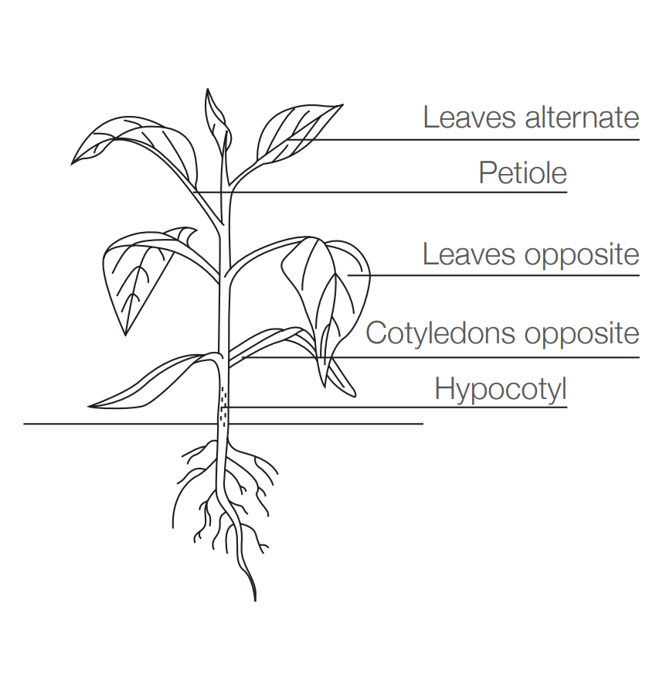- Home
- Knowledge library
- How to identify broad-leaved weeds in arable fields
How to identify broad-leaved weeds in arable fields
This guidance provides an easy reference to broad-leaved weeds in the UK, including how to identify and manage them based on an understanding of their biology.
The encyclopaedia of arable weeds
Key features of broad-leaved weeds
Each seed contains two initial leaves, called cotyledons (dicotyledonous). The first and then the second true leaves follow. In grass weeds, each seed contains one initial leaf (monocotyledonous).
The size and shape of the cotyledons and the first true leaves are fundamental early identification features, along with other distinctive features. The seedling stem is the hypocotyl, which varies in length and colour.
To identify broad-leaved weeds, ask:
- What is the cotyledon shape? Pointed, long and narrow or oval or round?
- Are the cotyledons large or small?
- Are they close to the ground or up from it?
- Are there other distinctive markings on the cotyledons or true leaves? Notched tips, backwardly directed lobes, hairs?
- Is the hypocotyl long or short?
- What colour is the hypocotyl?
- What colour, size, shape and texture are the first true leaves?
- Are there any other distinguishing features?
 AHDB
AHDB
Find out about the UK’s broad-leaved weeds
To aid weed identification, our guidance features photographs of each weed at four growth stages – capturing the most striking features. It also provides details of the weeds’ life cycle and its typical distribution in the UK.
A–E
F–P
Q–Z
Herbicide resistance in broad-leaved weeds
In the UK, herbicide-resistant broad-leaved weeds affect acetolactate synthase (ALS) and triazinone herbicides, with alternative modes of action (MoA) remaining effective. Find out about resistance in UK populations of chickweed, groundsel, common poppy and scentless mayweed, and the actions required to limit its spread.

